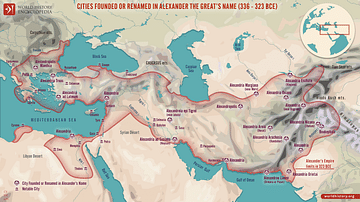Video
Cite This Work
APA Style
Kyokai, U. T. N. N. H. (2018, September 13). Cultural Landscape and Archaeological Remains of the Bamiyan Valley (UNESCO/NHK). World History Encyclopedia. Retrieved from https://www.worldhistory.org/video/1469/cultural-landscape-and-archaeological-remains-of-t/
Chicago Style
Kyokai, UNESCO TV NHK Nippon Hoso. "Cultural Landscape and Archaeological Remains of the Bamiyan Valley (UNESCO/NHK)." World History Encyclopedia. Last modified September 13, 2018. https://www.worldhistory.org/video/1469/cultural-landscape-and-archaeological-remains-of-t/.
MLA Style
Kyokai, UNESCO TV NHK Nippon Hoso. "Cultural Landscape and Archaeological Remains of the Bamiyan Valley (UNESCO/NHK)." World History Encyclopedia. World History Encyclopedia, 13 Sep 2018. Web. 14 Apr 2025.





